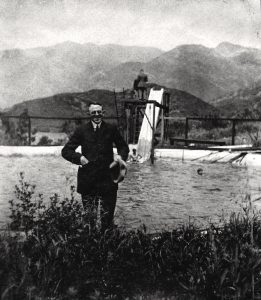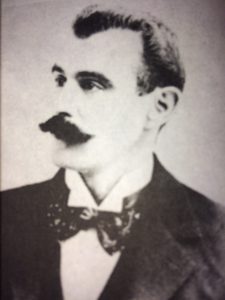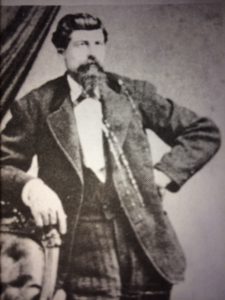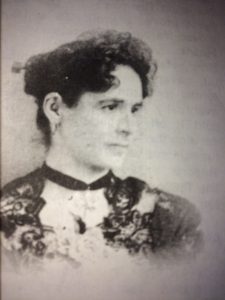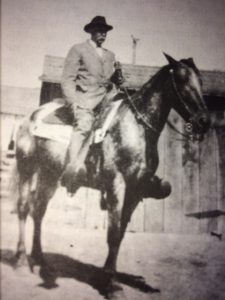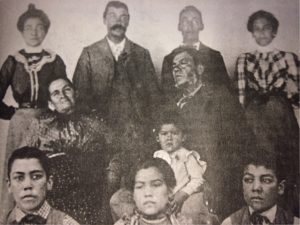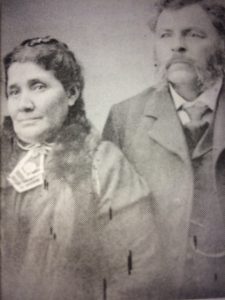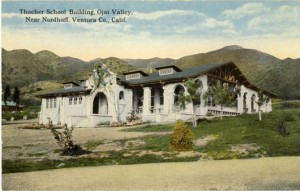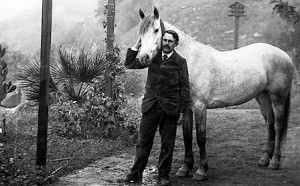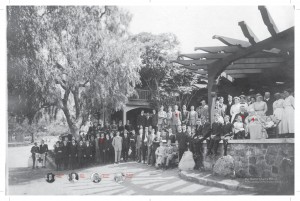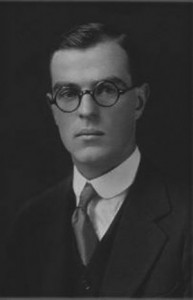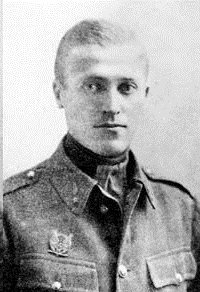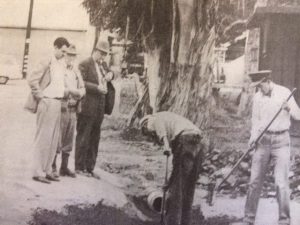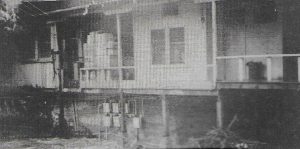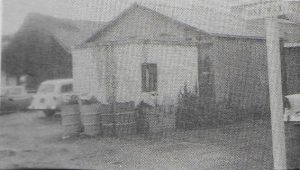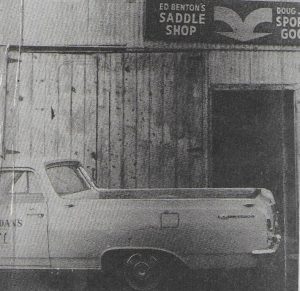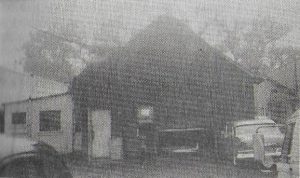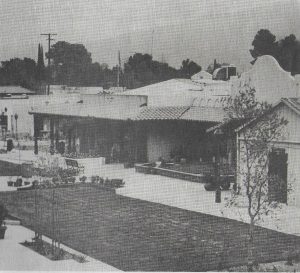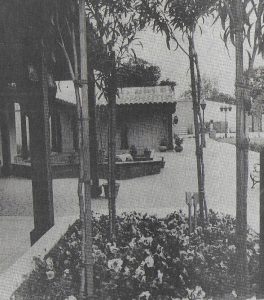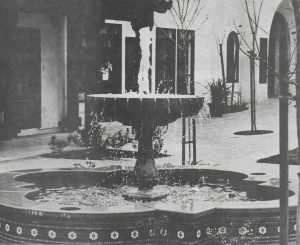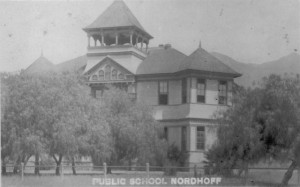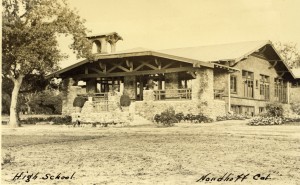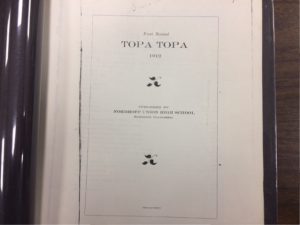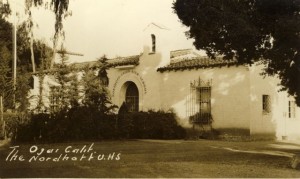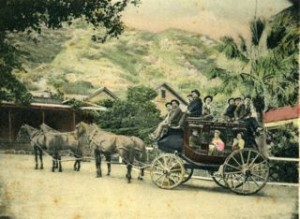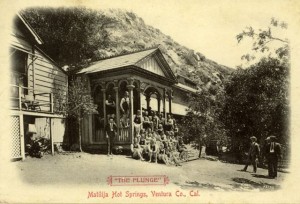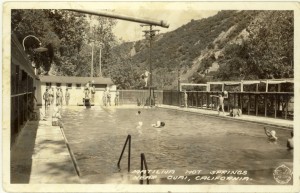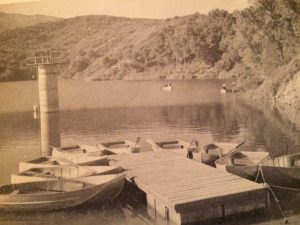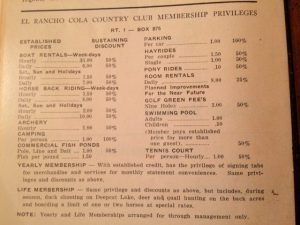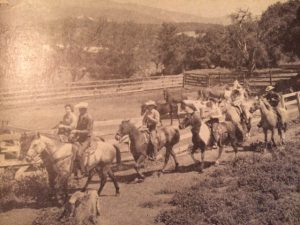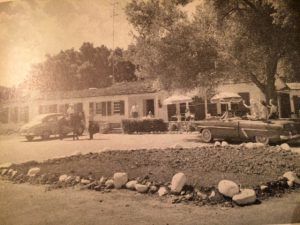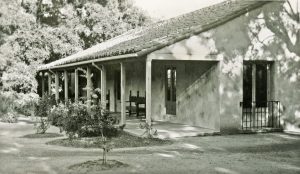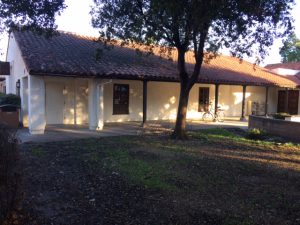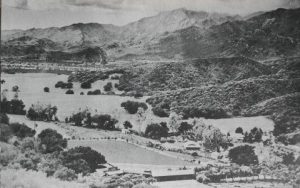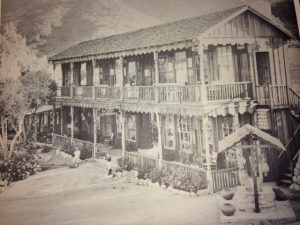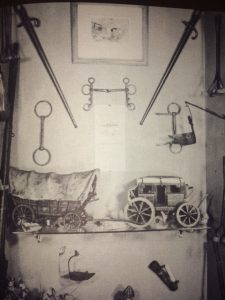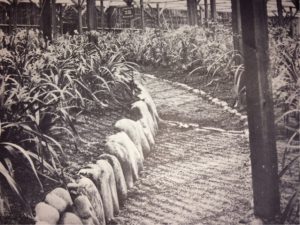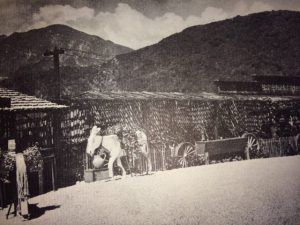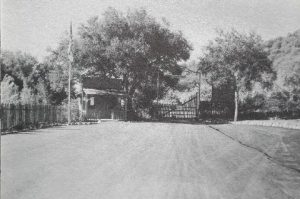The Duke Comes to Ojai
Written and compiled from various sources by Tony Thacher.
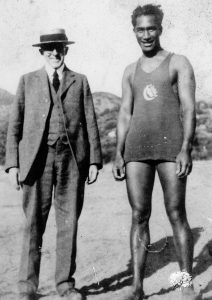
On a dry and dusty afternoon in late October of 1922 this unlikely pair were captured on film standing near the top of the alluvial fan emanating from Horn Canyon in the northeast corner of the Ojai Valley. Sherman Day Thacher, as headmaster of the school he founded 33 years before, is shown flanked by Olympic swimming gold medalist Duke Paoa Kahanamoku of Honolulu, Hawaii. Duke had been invited to come up from Los Angeles to give a demonstration and instruction in swimming to the assembled student body in the Thacher School’s pool. In reality this crude concrete structure was a rather murky irrigation and fire reservoir full of biota from the creek that filled it.
Duke’s swimming skills, superb physique and good looks had already made him a star both in and out of the water. And his gold medals and promotion of board surfing had made his reputation as the “Father of Modern Surfing” and the “Ambassador of Aloha.” From almost the moment of his birth on August 24, 1890 in Honolulu, Kahanamoku’s life revolved around the warm Pacific waters surrounding Oahu. While that on its own might not have been a particularly unusual accomplishment for an Hawaiian Islander of the time, what was unusual was his speed through the water. In the first officially sanctioned Amateur Athletic Union (AAU) swim meet in Hawaii in August of 1911, Duke knocked over 4 seconds off the world record for the 100-yard open water event, causing stateside AAU officials to declare there must have been an error and refusing to sanction the time.
Although not used to swimming in a pool, Duke continued his winning ways in the water stateside. At the Olympic games of 1912 held in Stockholm, there was no mistaking Duke’s incredible speed and power, and he won the 100-meter freestyle, again breaking the world record and easily taking the Gold medal. Over the next few years, Kahanamoku’s reputation grew to new heights as he continued shattering world aquatic records in various competitions around the globe. Duke Kahanamoku continued swimming for the rest of his life, winning his last Olympic medal at the age of forty-two. His remarkable twenty-one year career as an Olympic champion remains today a record achievement.
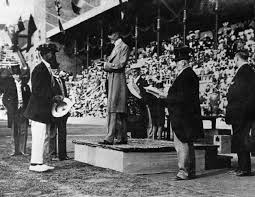
At the same time, he was credited for popularizing the sport of surfing. In a series of widely attended demonstrations around the world, Duke would ride the waves on his handmade long board to the delight of onlookers, and thus the ancient sport was revitalized along the coasts all over the world.
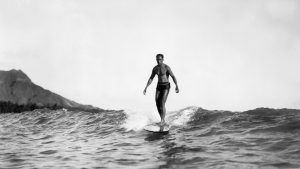
As someone identified with the Hawaiian Islands it is easy to forget that Duke Kahanamoku ever spent significant time anywhere else, yet he was a regular presence in Southern California throughout the 1910’s and 1920’s. The Southland was equally charmed with Duke making many friends and becoming a particular favorite of the movie colony. And, of course, his worldwide fame and good looks didn’t go unnoticed by the studios. In 1925, Famous Players-Lasky (Paramount) offered Duke a film contract. However, his promising film career was hobbled by an ironic twist – he couldn’t appear on-screen doing what the world best knew him for – swimming. AAU rules strictly prohibited Duke from accepting money for swimming. And Duke had no intention of giving up his amateur standing in athletics just for Hollywood film making, which he considered nothing more than a fun lark. So the studios found themselves with a non-swimming swimming star and were forced to come up with creative ways to use him in non-aquatic roles. They tried their best and over the next few years, Duke made appearances in a number of films. Without being able to be seen as the aquatic champion, his career in movies in the ‘20’s quickly fizzled. However, in later years, Duke would return to the screen on several notable occasions. In 1948 he played a native chieftain opposite another famous “Duke,” John Wayne, in The Wake of the Red Witch, and in 1955 he again played a native chief in the John Ford-directed Mister Roberts with Henry Fonda and James Cagney.
Kahanamoku left a legacy in his native Hawaii, where he became its most revered citizen and goodwill ambassador. For more than twenty years he served as Sheriff of Honolulu and after Hawaii became the 50th State in 1959, he was made the State’s official “Ambassador of Aloha.” Kahanamoku died at the age of seventy-seven, just three weeks after greeting Hawaii’s one-millionth visitor.
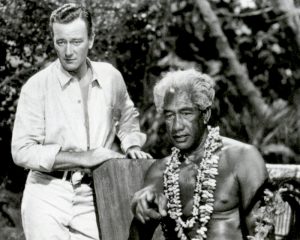
Today, there are many memorials and monuments to Duke Kahanamoku on the Hawaiian Islands, outside Sydney Harbor and elsewhere, but all too few stateside. However, in Ojai, it’s Sherman Thacher’s unheated and untreated irrigation reservoir that can still be linked to the legendary swimmer and surf rider, Duke Paoa Kahanamoku.
